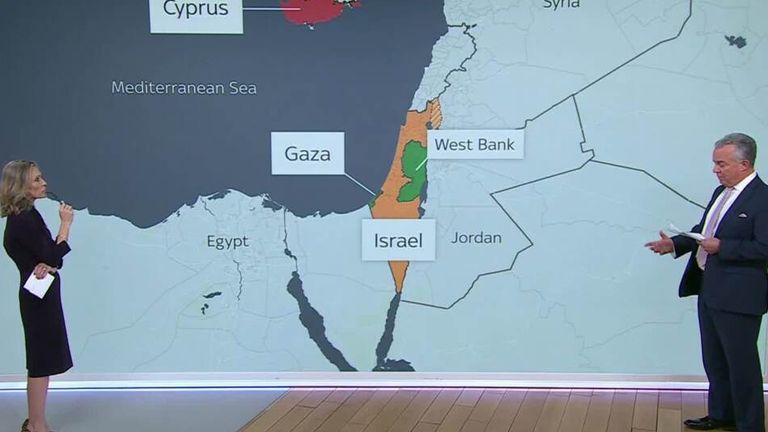US President Joe Biden has said reaching a six-week ceasefire deal in Gaza before the start of Ramadan is “looking tough”.
His comments come after the US secretary of state, Antony Blinken, said it was up to Hamas to make further progress on the truce.
“The ball is in their court,” he said.
“We’re working intensely on it, and we’ll see what they do,” Mr Blinken added ahead of a meeting with Turkish foreign minister Hakan Fidan on Friday.
He said the US remains “intensely focused” on securing a ceasefire.
Hamas left negotiations in Cairo on Thursday without a deal, dampening hopes an agreement will be reached before the start of the Muslim Holy month of Ramadan – which is expected to start on Sunday evening, depending on when a new moon is sighted.
The US had targeted a truce before Ramadan began.
Israel and Hamas have blamed each other for the lack of agreement.
Meanwhile, the Pentagon has denied that US aid airdrops caused civilian casualties in Gaza on Friday.
Palestinian officials reported that five people were killed and several others were wounded when boxes of aid fell on them by mistake.
Footage showed dozens of people running around as the boxes were dropped.
“Press reports that US airdrops resulted in civilian casualties on the ground are false,” a Pentagon spokesperson said.
“We have confirmed that all of our aid bundles landed safely on the ground.”
Countries including the US, the UK and Jordan have dropped aid packages into Gaza by air as the territory faces a worsening humanitarian catastrophe.
US forces have airdropped a total of 124,000 meals into Gaza to date, according to the Pentagon spokesperson.
Airdrops provide considerably smaller amounts of aid than truck deliveries and aid groups have warned it has become nearly impossible to deliver supplies within most of Gaza.
Read more:
Would a temporary dock help get aid into Gaza?
The West has lost patience with Israel over aid to Gaza
Biden’s Gaza port gamble risks drawing US into war
The US has announced it will establish a temporary port on the Gaza coast aimed at increasing the flow of aid into the territory.
According to the US, building the port will take “likely up to 60 days” in planning and execution.
While the process may involve 1,000 members of the US military, the Pentagon said US troops will not be put on the ground in Gaza itself.
The British Foreign Secretary, Lord Cameron, revealed earlier that the UK had been involved in the new maritime corridor “from the start” and had been “helping with the pre-screening of aid”.
However, despite welcoming the US development, he urged Israel to open its own port of Ashdod which could be used to deliver aid while the port is built, describing the lack of aid getting into Gaza as “frustrating”.
After months of warnings over the risk of famine, many Palestinians, especially in the devastated north, are now facing starvation.
At least 20 people have died from malnutrition and dehydration at the north’s Kamal Adwan and Shifa hospitals, according to the Hamas-run health ministry. Most of the dead are children.
Israel launched its military campaign in Gaza in response to Hamas’s 7 October attacks, in which
some 1,200 people were killed and more than 250 were abducted.
Gaza’s Hamas-run health authorities say more than 30,800 Palestinians have been killed since the start of the Israeli offensive.


